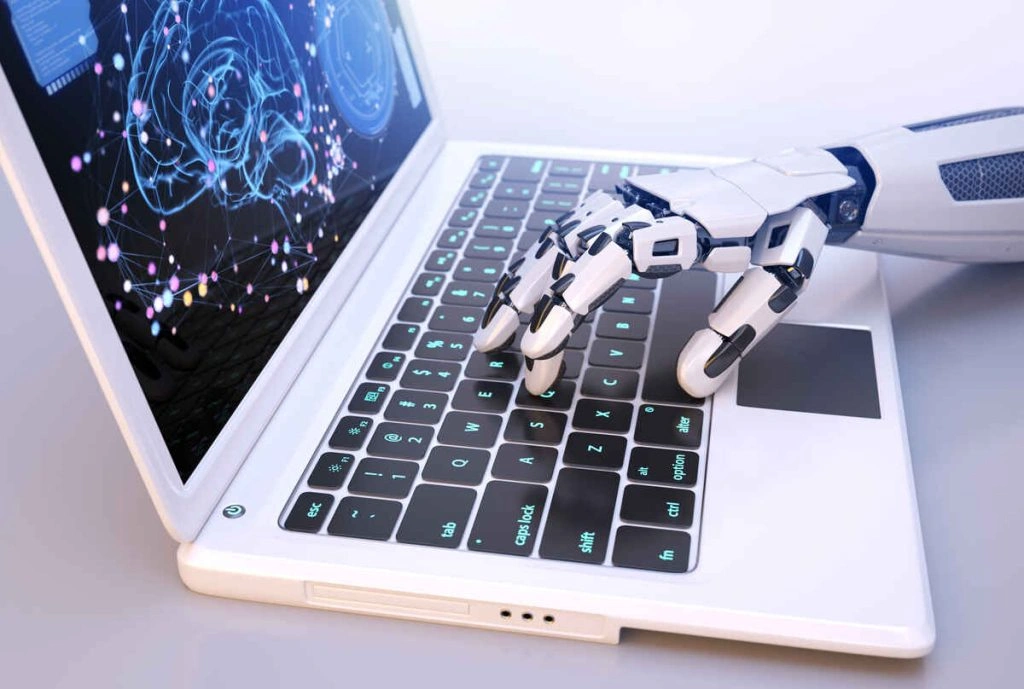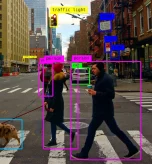The power of machine learning and artificial intelligence goes beyond their flashy features and a futuristic vibe. Even though these technologies aren’t flawless, they have already transformed many industries and are poised to continue doing so in the future. From healthcare to finance to transportation, machine learning, and AI are streamlining processes, improving accuracy, and enabling new capabilities.
The accuracy and reliability of machine learning models depend heavily on the quality of data they’re fed. The human-in-the-loop approach is the magical ingredient that ensures the success of these technologies. It involves incorporating human expertise, knowledge, and feedback into machine learning.
With an emerging amount of personal data generated daily by users, companies worldwide are looking for ways to access this treasure trove of information as fast as possible. Now, even with the ongoing debate on the proper approaches and artificial intelligence ethics code, AI tools still need human supervision for data processing, even with an active learning strategy.
Why is Human-in-the-Loop crucial for ML and AI projects?
Human-in-the-Loop (HITL) is crucial for Machine Learning (ML) and Artificial Intelligence (AI) projects because it helps to ensure accuracy and minimize errors. HITL involves incorporating human judgment and feedback into the ML and AI algorithms. Since these systems are designed to learn from data, they can make errors or produce biased results if the data is not representative or if the data set is incomplete.
HITL helps to identify and correct these errors, improving the overall performance and reliability of the system. Human feedback can provide valuable insights that machines cannot. By combining human judgment with machine learning, organizations can create beneficial and effective solutions that can deliver real value to their customers.
Automation of Complex Tasks
Human experts can provide input and guidance at various stages of the machine-learning process. Ensuring automation of complex tasks that are difficult or impossible for machines to complete accurately and that the models are accurate and reliable.
For example, self-driving cars use a human-in-the-loop machine-learning approach to ensure the safety of passengers and pedestrians. While the car’s sensors can detect obstacles, human drivers provide additional feedback to ensure the car makes accurate real-time decisions.
Enhanced Decision-Making Capabilities
In natural language processing (NLP), using human-in-the-loop AI (HIL-AI) is becoming increasingly important. HIL-AI allows developers to leverage human expertise to create more accurate and effective models. This is accomplished by combining machine learning algorithms with manual annotation by domain experts. By having a person review and modify the model’s output, developers can ensure that the model is accurate and reliable, ensuring that the models are trained on the most relevant data.
For image recognition, human annotators can label images with specific attributes, allowing the machine learning algorithm to learn more quickly and accurately. This saves time and resources, leading to more efficient systems.

How Human-in-the-Loop Helps to Mitigate Bias in AI Systems
One of the most significant benefits of incorporating human-in-the-loop machine learning in AI systems is that it can help to mitigate bias.
Bias in AI can be defined as a systematic error or deviation in the decision-making process of an algorithm. It can occur due to various reasons, such as:
- an insufficient representation of certain groups in the training data,
- incorrect assumptions made during the algorithm’s design,
- or the introduction of unintentional prejudices by the data scientists who built the system.
The potential for bias in AI systems is a significant concern because these systems can impact the lives of many people. For example, biased AI algorithms can lead to discriminatory decisions in areas such as hiring, lending, and criminal justice.
To address this issue, human experts can review and label training data to ensure that it represents different groups and does not contain biases. Human intelligence can also oversee the operation of the AI system’s machine learning models and intervene if it makes potentially harmful or discriminatory decisions.
Sure, machine learning algorithms can crunch numbers like nobody’s business, but let’s face it – they don’t have that human touch. Without our expert insight and cultural context, these AI systems can get really biased quickly. It’s up to us to create a more inclusive and equitable future for all.
Challenges Associated with Incorporating Human-in-the-Loop into Machine Learning Workflows
Integrating the HITL approach in machine learning workflows has a wide range of challenges that should be addressed in the baseline model, and they include the following:
- Cost: Human-in-the-loop workflows can be more expensive as they require human resources to perform the necessary tasks.
- Time: Humans can be slower than automated systems in performing some tasks increasing the time required to complete a project.
- Expertise: Training human experts can be challenging. They need the right skills and knowledge to do their tasks well.
- Scalability: Managing the increased workload requires more resources and human experts.
- Ethics: Using human-in-the-loop workflows can also raise ethical concerns, such as privacy, confidentiality, and potential harm to the humans involved.
To address these challenges, it is essential to design a human-in-the-loop workflow that is efficient, effective, and ethical. Adequate investment in resources, including training, technology, and infrastructure, is necessary for successful implementation. Ongoing monitoring and evaluation can help identify and improve any issues in workflow performance.
Examples of Human-in-the-Loop Machine Learning Applications
Machine Intelligence won’t be able to advance without human interaction in the foreseeable future. Ma hine Learning as a whole enables a system to learn from data without explicit programming. It is an iterative process that uses algorithms to analyze data and make predictions or decisions based on the data.
These intelligent systems broadly use continuous feedback loops and reinforcement learning to improve accuracy. Training datasets use automation software to label data; machine learning algorithms are used to analyze and classify the data. As the system processes more data, it learns and adapts to become more accurate. This approach is used in various applications, such as speech recognition, image recognition, and natural language processing. However, it’s important to note that these systems are not infallible and can still make mistakes that require human intervention.
Sometimes the training process of machine learning models can be complex and may require a human-in-the-loop approach. A great example is computer vision learning which creates specific data sets for ML. It requires a human-centered approach to identify elements in an image accurately. This can include identifying objects, people, and even emotions. Machine learning models can become more accurate and effective by involving humans in training. As technology evolves, human involvement in ML will likely become even more critical.
Human Feedback Improves AI Development Ethics
Ethics is a crucial consideration in developing AI systems, and the human- n-the-loop (HITL) approach is increasingly being recognized as a way to promote ethical AI. By incorporating human feedback, developers can ensure that AI models are not perpetuating discriminatory practices or reinforcing existing social inequalities.
Another ethical implication of HITL is enhancing transparency and accountability in AI systems. With the human feedback loop, AI models can be continuously monitored and updated to ensure that they are making accurate and fair decisions. This is particularly important in high-stakes applications such as self-driving cars or medical diagnosis, where errors can have severe consequences.
Moreover, HITL can also promote user trust in AI systems. When users are aware that there is human oversight and input in the development of AI models, they are more likely to trust the technology and use it in a responsible manner. This, in turn, can lead to the wider adoption of AI systems and the realization of their full potential in various industries.
The human-in-the-loop approach is also beneficial for businesses that employ AI technology, as it can help reduce costs and improve the efficiency of operations. Through a combination of automated processes and human supervision, companies can optimize their existing resources and achieve better results with fewer resources.

Human-in-the-Loop and Deep Learning Models
Deep learning is a subset o machine learning that involves training complex neural networks to perform specific tasks. The human-in-the-loop approach can also be applied to deep learning models to improve their accuracy and efficiency.
Active Learning
Active learning involves human annotators selecting specific data points to train the deep learning models rather than labeling all the data. This approach reduces the amount of training data required to achieve high accuracy.
Continuous Feedback Loop
The human-in-the-loop approach can also be used to provide continuous feedback to the deep learning models, which can help improve their accuracy over time.
Unsupervised Learning
Unsupervised learning involves training deep learning models on unlabelled data, which can be challenging. Human-in-the-loop can help provide labels and annotations to unsupervised learning data, improving the accuracy of the models.
Conclusion
Machine learning and artificial intelligence rapidly transform various industries, making processes more efficient, improving accuracy, and enabling new capabilities. The human-in-the-loop approach plays a crucial role in ensuring the success of these technologies, as it involves incorporating human expertise, knowledge, and feedback into machine learning.
Grasping the widening reach of these technologies can sometimes be challenging, and if you are looking for guidance on data services, speaking to an expert can help development teams navigate the complexities of data management and utilization.
With the rise of big data, businesses increasingly rely on experts who can help them harness the power of this wealth of information. Data services experts can help organizations optimize data usage, improve decision-making processes, and ultimately drive growth and success.






